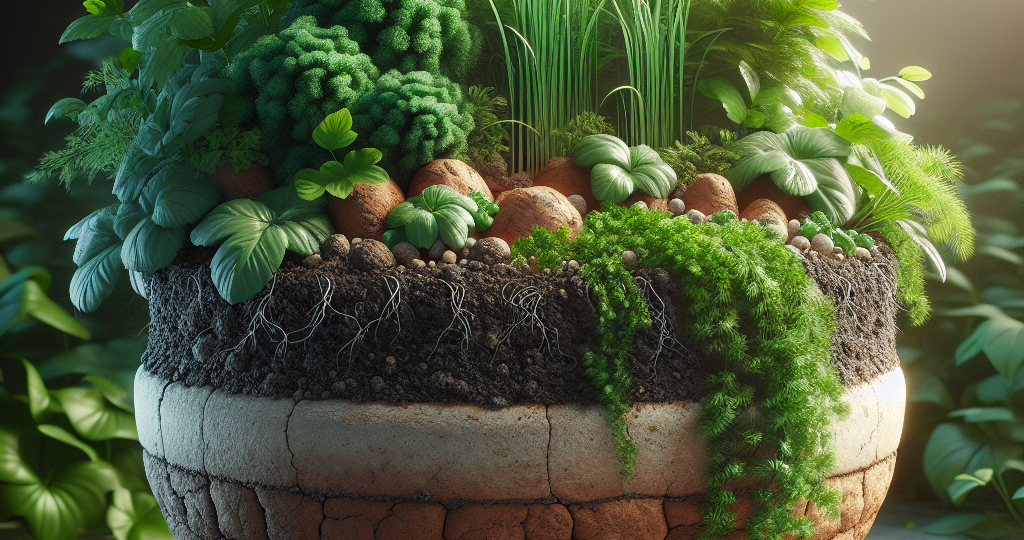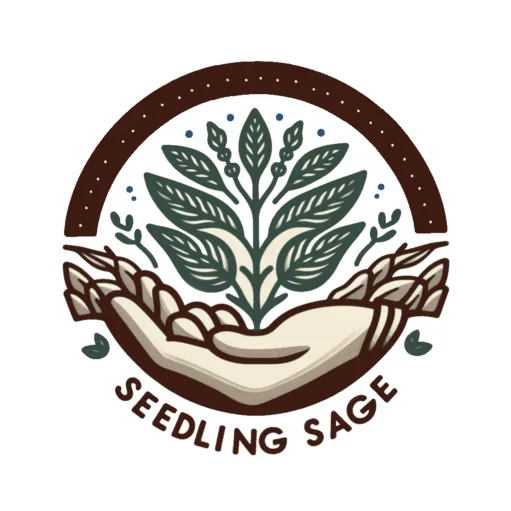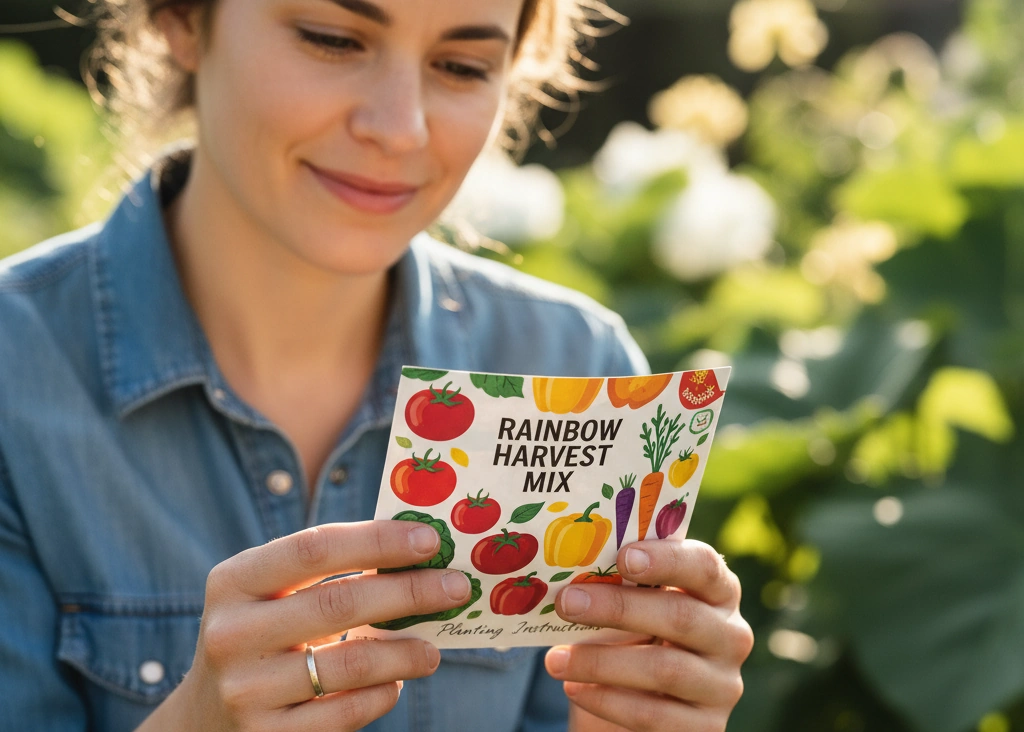Eco-Friendly Growth: Choosing the Right Organic Fertilizer for Container Plants
November 8, 2024 | by Emma Sage

ORGANIC FERTILIZER FOR CONTAINER PLANTS
11 min read
Discover the best organic fertilizer for container plants and reap fresh, flavorful rewards in limited space!
Organic Fertilizers for Container Plants
Why Organic Fertilizers Matter
I’ve learned that organic fertilizers play a crucial role in my container gardening adventures. Not only do they fuel healthy plant growth, but they jazz up the soil quality too. See, these fertilizers come from natural stuff, bringing in friendly microorganisms that supercharge the soil and pep up plant life. Unlike those synthetic fertilizers that can throw the soil’s rhythm off, organic picks keep the garden jiving in harmony (Heirloom Soul).
The real magic of organic fertilizers lies in their slow-release nutrient trick; my plants gobble up what they need at their own pace, dodging the scorched-earth effect that synthetic fertilizers might cause. Plus, they bulk up the soil structure, boosting its power to hang onto that precious water—perfect for those temperamental container plants that like to dry out faster than a desert cactus.
Unlike synthetic stuff that can mess up waterways and put fish in a bind (Heirloom Soul), organic fertilizers let me garden guilt-free. I’m shrinking my carbon footprint and giving Mother Nature a high-five in the process.
Meeting Plants’ Nutrient Needs
Certain veggies—like cucumbers, tomatoes, and sweet peppers—have their eyes on the prize when it comes to nutrients. According to ScienceDirect, getting these goodies to them purely via organic means before planting can be a head-scratcher, especially for nitrogen hogs.
Here’s a snapshot of what some popular container veggies crave:
| Vegetable | Nutrient Neediness (N-P-K) | Special Sauce |
|---|---|---|
| Cucumber | High (N) | Gotta keep that nitrogen flowing |
| Tomato | Middle Ground (N-P) | Loves a slow-release organic buffet |
| Sweet Pepper | Middle Ground (N-P) | Sips compost tea for extra zest |
By mixing in homemade compost or locally-sourced goodies, I meet their demands in a way that feels right. Dishing out natural amendments like organic container gardening supplies keeps my green friends happy and my patch thriving. For the nitty-gritty on best practices, I can nod to tips on organic vegetable container gardening and best organic soil for container gardening.
Fertilizing Container Plants
In my adventures with container gardening, I’ve picked up a thing or two about fertilizers, and let me tell ya, picking the right one is a game-changer for nurturing thriving plants. I’ve often found myself torn between liquid and slow-release fertilizers, each bringing their own perks to the table.
Liquid vs. Slow-Release Fertilizers
Imagine this: liquid fertilizers are like giving your plants a quick snack. They gulp down their nutrients fast, making them ideal if you want a quick lush boost. I lean toward using eco-friendly choices like fish meal emulsion and liquid kelp. These options let me feed my plants while keeping Mother Nature in mind (Almanac). They’re super flexible too, meaning I can tweak things easily if my plants are looking a bit peaky.
Now, slow-release fertilizers are kinda like the slow-cooked meals of the plant world. They offer a steady, long-lasting nutrient supply, often stretching up to 60 days. I’ve used fish meal pellets, cottonseed meal, and alfalfa pellets. Alfalfa pellets are a favorite; they pack a little something called triacontanol, a hormone that boosts plant growth (Almanac).
Here’s my go-to setup:
| Fertilizer Type | Why I Dig It | How I Use It |
|---|---|---|
| Liquid | Quick nutrient fix | Every 1-2 weeks |
| Slow-release | Long-lasting, steady results | About every 6-8 weeks |
Whatever I go with, I’m careful to stick to the instructions so I don’t go overboard. Over-fertilizing can wreck my plants and spill extra nutrients where they shouldn’t be (University of Minnesota Extension).
Correct Application Timing
Nailing the timing of fertilizer application is just as crucial as picking the right one. I like to apply liquid fertilizers during the growing season when my plants are slurping up nutrients like there’s no tomorrow. This usually falls in the warm summer months when growth is off the charts.
For slow-release fertilizers, I kick things off at the start of the growing season. This approach helps my plants soak up nutrients as they stretch and reach for the sky, keeping them robust throughout their growth period. My rough schedule looks like this:
| Fertilizer Type | When I Apply |
|---|---|
| Liquid | Every 1-2 weeks during plant growth |
| Slow-release | Right at the start of the season |
To make sure my green beauties are living their best lives, I stay tuned into their needs and adjust as needed. Using quality organic fertilizers at the right times has truly transformed my garden. For more insights and tips, check out my articles on organic vegetable container gardening and organic container gardening for beginners. Go ahead, take your green thumb to the next level!
Container Plant Maintenance
Keeping container plants happy and healthy takes a bit more than just a green thumb—it’s about making sure they get what they need to look their best. Let’s chat about some tried-and-true tricks that revolve around smart watering and the perks of mulching.

Watering and Nutrient Leaching
Watering is like Goldilocks’ porridge—you’ve gotta get it just right. I started my container gardening journey by figuring out my plants’ sweet spot for water and food. After planting, giving them a little pick-me-up with fertilizer is key, usually around two to six weeks in. This kinda depends on the soil mix I used, how often I water, and how fast my little green buddies are growing. According to the University of Minnesota Extension, overwatering can wash away the good stuff in the soil, also known as nutrient leaching. I found that my plants thrive when I stick to smart watering habits.
I’ve realized it’s smarter to use trays beneath my pots to catch excess water, but leaving water sitting there isn’t great. I had a nasty run-in with soggy conditions that messed up my plants by washing out the helpful nitrogen in the soil. So now, it’s a quick check-and-empty routine for me whenever I water.
For most container plants, nutrients fly the coop within about six weeks, even if you start off with top-notch potting mix. This makes keeping tabs on how you water a full-time gig in this container garden world.
| Watering Frequency | Signs of Overwatering | Recommended Action |
|---|---|---|
| Every 2-3 days (depends on how hot it is) | Leaves turning yellow, sad-looking stems | Scale back and ensure that drainage is on point |
| Weekly | Limp, parched soil | Give them a bit more love with regular drinks |
Benefits of Mulching
Mulching is my secret weapon in container gardening; it’s like that cherry on top that makes everything better. Putting down mulch does wonders—keeps the soil from drying out too quickly and helps the plants tackle heat like a pro. From my own sweaty summer days in the garden, this has kept my plants from waving a little white flag. The folks at the University of Minnesota Extension back me up on this.
Plus, toss some mulch on your soil and it stops all that messy dirt splash from rain or when you’re watering, keeping your plants’ leaves nice and clean. Mulch also pitches in by keeping those pesky weeds at bay and making room for the plants you actually want to thrive. I’ve leaned into organic mulch materials like straw, some wood chips, and leaf bits—they help with keeping things moist and add a touch of organic goodness as they break down during the season.
| Type of Mulch | Benefits |
|---|---|
| Straw | Easy to handle, keeps moisture in check |
| Wood Chips | Stays put longer, stops weeds from crashing the party |
| Shredded Leaves | Feeds the soil while it slowly vanishes |
These tips and tricks have helped me keep my container plants looking spiffy and living their best lives. If you’re itching for more on organic gardening, take a gander at organic vegetable container gardening or peek into organic container gardening supplies for more goodies to up your gardening game.
Soil Fertility and Plant Flavor
I’m totally into spicing up my container garden veggies, and knowing my soil’s fertility is where it all begins. It’s wild how the dirt I dig in affects the way my plants grow and taste.
Effects of Soil Fertility on Flavor
Trust me, soil fertility is make-or-break when it comes to how delicious my veggies turn out. I’ve learned that sticking with slow-release goodness like compost and crops that build the soil beats the pants off synthetic fertilizers in the flavor department. When I go heavy on synthetic, especially water-soluble nitrogen, my plants get all leggy and tasteless. Plus, chemical fertilizers can make my greens taste bitter, which is something I’d prefer to skip (Atina Diffley).
| Fertility Source | Flavor Impact |
|---|---|
| Compost | Gives veggies extra yum |
| Decomposing crops | Also boosts flavor |
| Water-soluble nitrogen (synthetic) | Tends to dull taste |
| Chemical fertilizers | Can make crops bitter |
Impact of Minerals on Taste
Here’s another thing–minerals in my soil decide a lot about my veggies’ tastes. Soils rich in clay and organic stuff pack minerals like a charm, leading to tastier eats. I’ve noticed carrots rock the taste when in clay-heavy soils, but man, they look sharp in sandy loam. Overwatering? Total flavor zapper for melons and tomatoes. Less water usually means more taste magic (Atina Diffley).
| Soil Composition | Vegetable Preference |
|---|---|
| Clay soils | Carrots love it! |
| Sandy loam | Carrots show off here |
| Balanced moisture | Key for yummy melons and tomatoes |
Recognizing each veggie’s thirst and timing can seriously crank up the flavor dial in my garden.
Managing my garden’s soil fertility and how much water they sip affects the taste big time. Embracing organic practices, like what I find in organic vegetable container gardening and organic container gardening for beginners, ensures that my veggies taste fab while keeping Mother Earth happy too.
Sustainable Fertilizing Practices
Taking care of our planet while tending to my garden is super important, especially when I’m nurturing my beloved container plants. I like to use methods that keep Mother Nature happy too. Let me share the scoop on some homegrown organic fertilizers I’ve played with and why I steer clear of those no-good synthetic ones.
Homemade Organic Fertilizer Options
Mixing up my own fertilizers is not only friendly to my wallet but also does wonders for my plants. These homemade options pack a punch with the nutrients my green buddies need to thrive. Here are a few favorites I wouldn’t keep from you:
| Fertilizer Type | Ingredients Needed | Nutrient Benefits |
|---|---|---|
| Compost | Leftover veggies, yard clippings | Loads of nutrients and makes the soil nice and fluffy. |
| Banana Peel Fertilizer | Banana peels | Full of potassium—hello, flowers and fruits! |
| Eggshell Fertilizer | Crushed eggshells | Brimming with calcium for strong cell walls. |
| Coffee Grounds | Used coffee grounds | Rich in nitrogen, makes the soil super fertile. |
| Alfalfa Pellets | Alfalfa meal or pellets | Comes loaded with nitrogen and a bit of magic called triacontanol that pumps up growth. (Almanac) |
By using these homemade goodies, I keep my plants healthy and dodge the risk of damaging them with synthetic stuff. For a closer look at how I got started, swing by my piece on organic container gardening for beginners.
Avoiding Synthetic Fertilizers
Hooking up with synthetic fertilizers isn’t my jam. Stuff like Miracle-Gro is no friend to soil critters. It can torch your plants’ leaves and roots with its nitrogen overload (Heirloom Soul). Plus, it messes with our waterways, stirs up algae parties, and gives marine life a real headache (Heirloom Soul).
Organic fertilizers, on the other hand, are my best buds. They have their roots in natural plant and animal materials, helping soil life thrive and feeding my green pals steadily. Things like fish meal pellets and cottonseed meal bring the love for a whole two months, and I don’t even have to fret about giving them too much (Almanac). Going organic keeps my plants happy and my garden eco-friendly.
I’m always on the lookout for savvy ways to keep my gardening groove green and clean. If you’re curious, swing by for more tips on organic vegetable container gardening. Keep those gardens growing strong!
Choosing Safe Containers
Picking the right containers for my organic plants is key to making sure they grow up strong and healthy. So, let me share what I’ve found about choosing containers that won’t harm your green buddies.
Non-Toxic Container Options
When I’m in the garden, I stick to containers that keep my plants and their organic fertilizers safe and sound. Here are some top picks of mine:
| Container Type | Benefits |
|---|---|
| Cedar Wood Planters | They’re tough, naturally fight off bugs and mold, and keep roots cozy. |
| Fabric Pots | They let the roots breathe, don’t heat up too much, super easy to move around, and they’re biodegradable. Bio-D and Smart Pot are some great ones to try. |
| Plastic Planters (#4 and #5 only) | Light, cheap, but watch those recycling codes to dodge nasty chemicals. |
Cedar wins my heart with its rustic look and plant-safe material. Fabric pots? Absolute lifesavers; they make sure my plant roots get the air they need for that extra growth spurt.
Avoiding Harmful Substances
To keep my plants ticking, I sidestep containers known to house bad stuff, since that junk can sneak into the soil and mess with both plants and people. Here’s what I watch out for:
- Stay away from old junk like car tires or those wood bits from pallets. You don’t want arsenic or creosote gatecrashing your garden party.
- Junk anything that used to hold yucky stuff—pesticides, fungicides, you name it.
- Be picky about plastic codes. Plastics #1, #3, #6, and #7 might be trouble. I keep it to #4 and #5 for peace of mind.
Picking smart containers means my plants stay chemical-free and I’m just a happy gardener watching them grow without a hitch. For more on putting your plants in safe containers, have a look at organic vegetable container gardening and organic container gardening for beginners.
Happy Gardening,
Emma Sage
RELATED POSTS
View all



